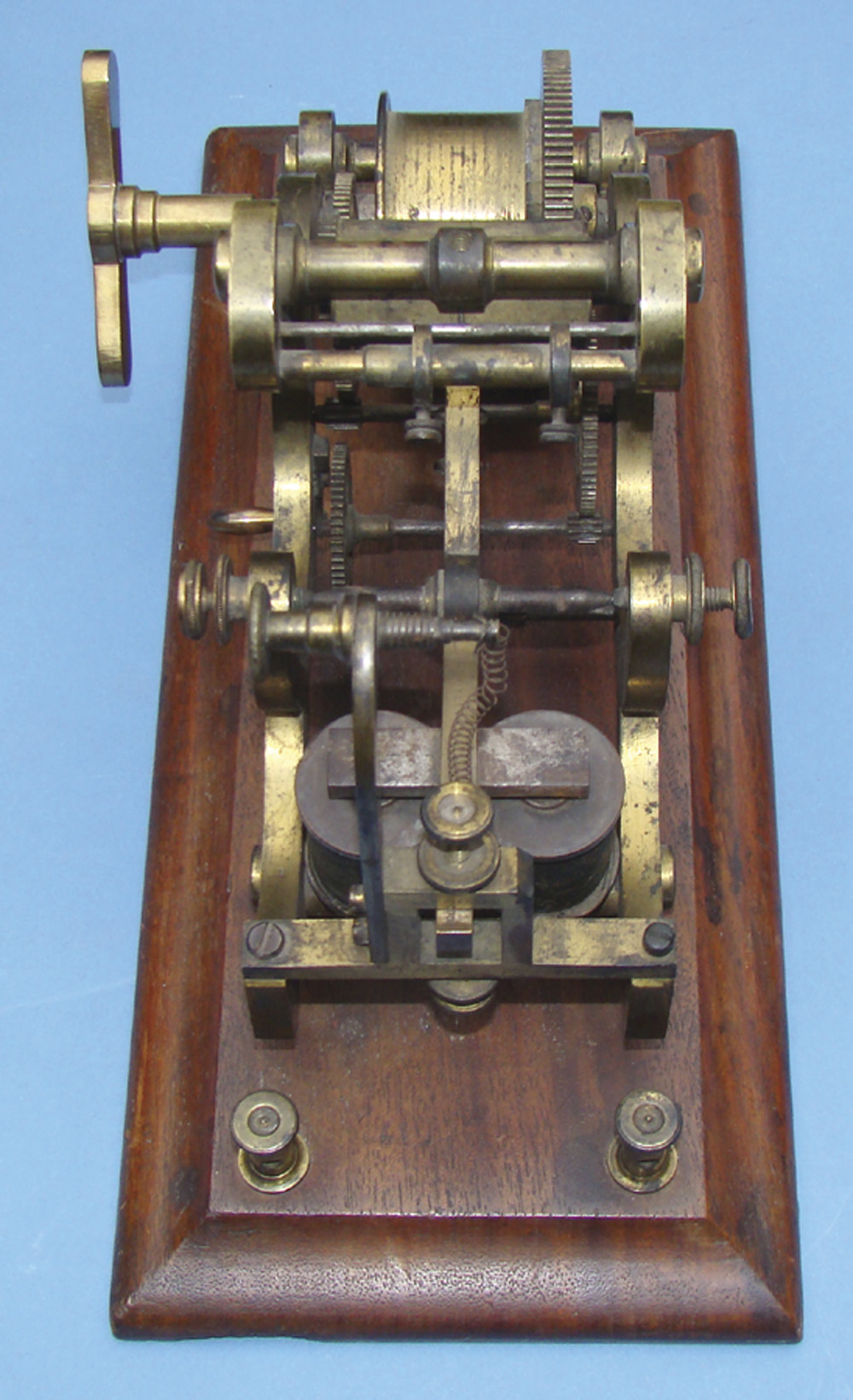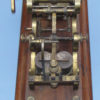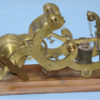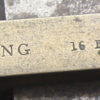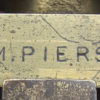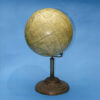EARLY RECORDING TELEGRAPH REGISTER — THE SAMUEL MORSE / ALFRED VAIL DESIGN
Stock Number: 9348
$4950.
For sale, antique 19th century example of the first commercial recording telegraph to be successful. It is a substantial and attractive brass instrument with electromagnetic coils, and a large winding drum and gear train to rollers which advance a paper tape. An excellent example of this important communication device designed and manufactured in the U.S.
Dimensions
5-3/4x13 inch board for mounting (15x33 cm)
Circa
c.1865
Country of manufacture
North America
Description
EARLY RECORDING TELEGRAPH REGISTER — THE SAMUEL MORSE / ALFRED VAIL DESIGN, American, c. 1865, signed “J.S. Keeling, 16 Broadway” and “E.M. Pierson” and numbered “1.” This substantial brass device is mounted to a 5-3/4″ x 13″ (15 x 33 cm) mahogany board, with two terminal posts wired to a pair of electromagnetic coils. The main structure is most elegantly designed, with aesthetic recurved shaping of the 5/16″ thick solid brass side plates. The brass mechanism consists of a large winding drum which would carry a cord to a heavy weight below (not included). The descending weight drives a gear train to a governor and to ridged rollers advancing a paper tape. An electrical impulse to the coils creates a momentary magnetic field, pulling down an iron bar attached to a spring-loaded brass lever arm with a pricker point which cuts a short slot in the tape, thus permanently recording a serious of short (and long) slots, transmitted to this register over telegraph lines. The lever arm has four clampable adjustments for play, and there is a finger lever to arrest the motion of the tape. Condition is fine, the brass retaining much of its original lacquer finish.
This is an excellent example of the first commercially successful recording telegraph receiver. It was developed by Samuel F.B. Morse and in particular by his assistant Alfred Vail (who incidentally also developed the “Morse” code).
James S. Keeling is listed as working in lower Broadway, New York City, c. 1864 – 1867. He had been briefly associated with Luther Tillotson in forming Tillotson & Co. in 1862. Then c. 1865 Tillotson hired one Edward M. Pierson as shop superintendent, and the business prospered. Thus we have found the connection between Keeling and Pierson, the two names on our instrument. The Tillotson firm became a major supplier in the railroad / telegraph market, selling other manufactures as well as their own. Perhaps Keeling and Pierson were in a sort of partnership c. 1865, either within the Tillotson firm or outside it.
Ask the Dealer
Dealer information
 TESSERACT
TESSERACT
David and Yola Coffeen both have enjoyed academic careers, as planetary astronomer and as linguist/educator. But since 1982 (yes, 1982!) they have been full-time dealers in early scientific and medical instruments, under the name Tesseract. Selling primarily by catalogue (over 100 issued so far) they also have a web presence at www.etesseract.com, and can be contacted at [email protected].




